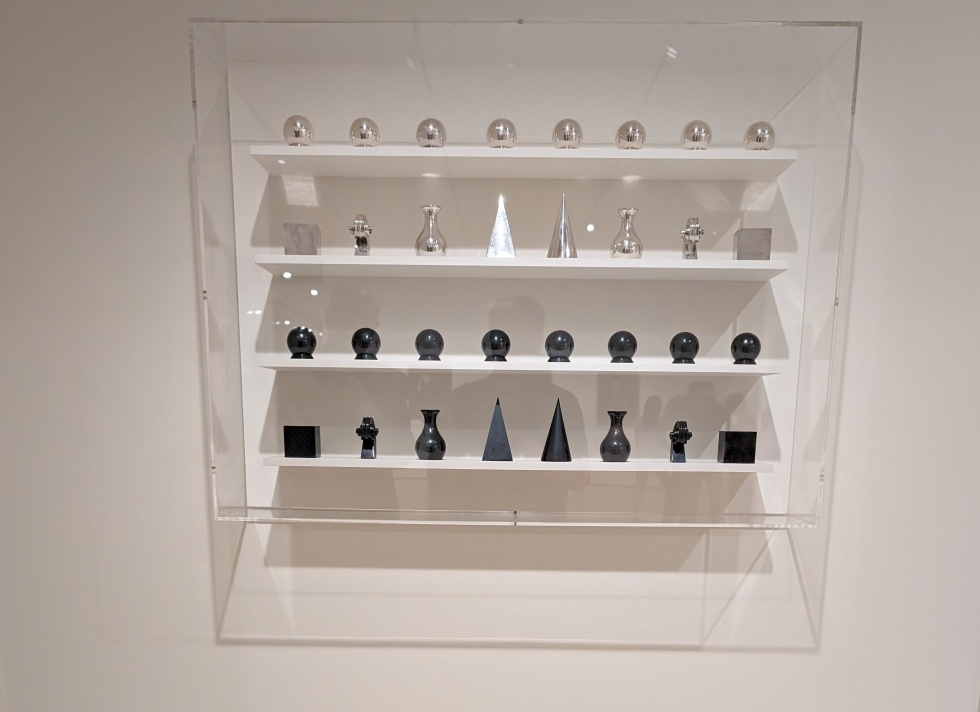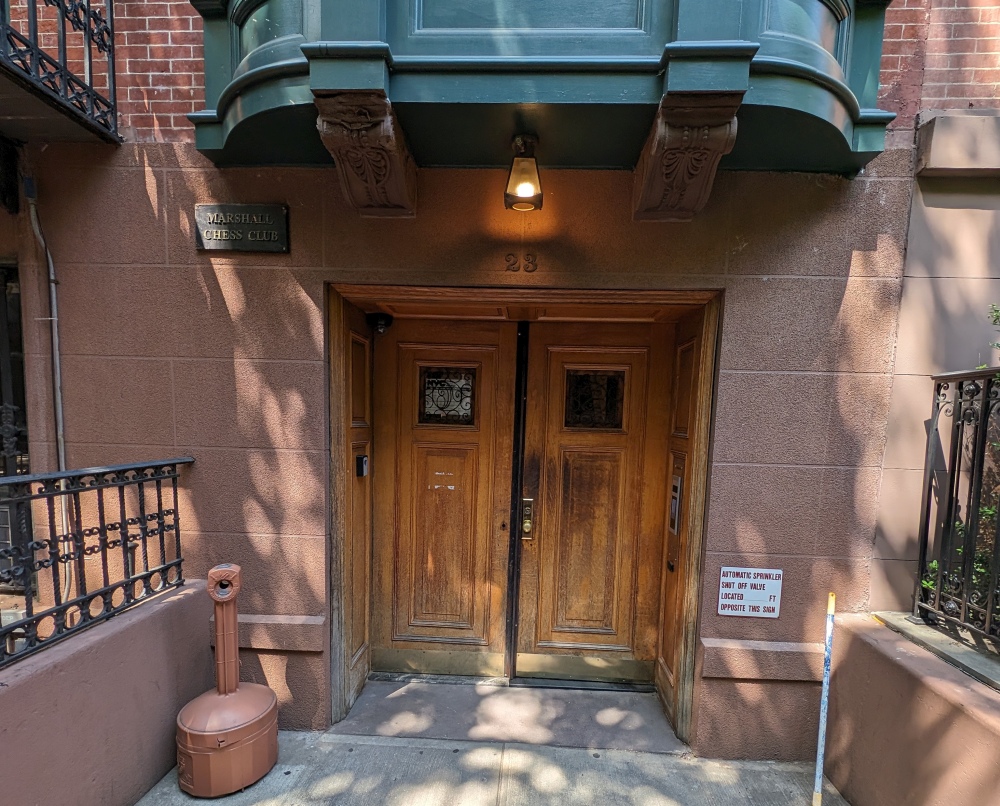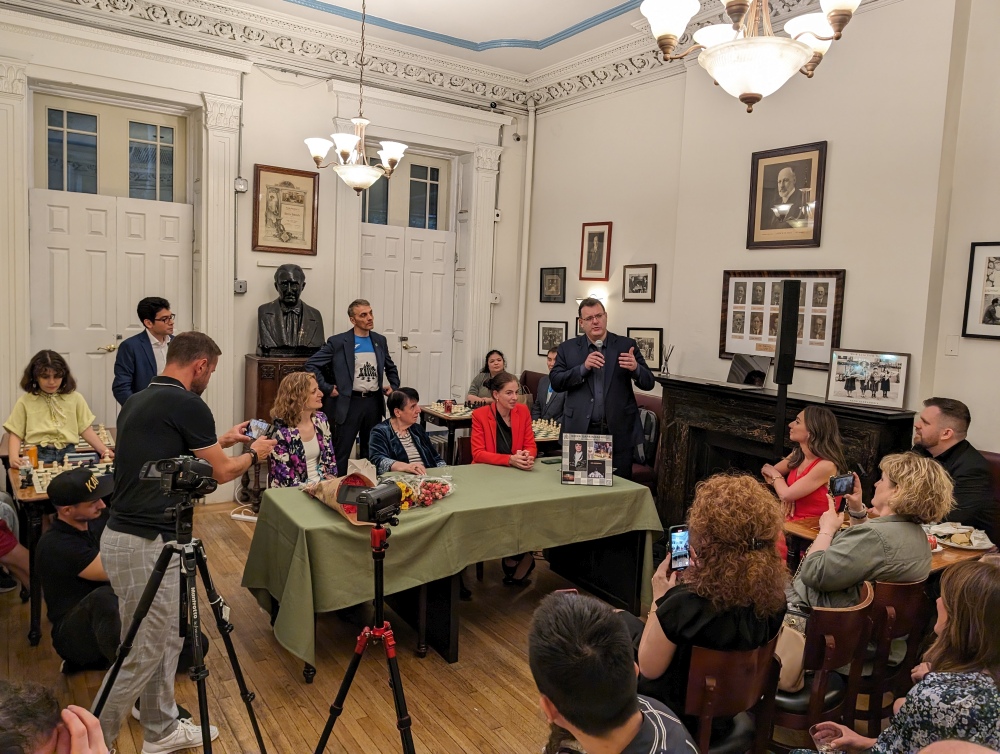 New York City is a universe unto itself: everything and nothing. The flashiest, shiniest city on the planet, an iconic symbol of America, yet lacking the historic relics of its global peers. In this melting pot of skyscrapers, cultures, and burning and burnt-out ambitions, chess thrives in its most electric forms—from bookshops and cafés to hustlers in the parks.
New York City is a universe unto itself: everything and nothing. The flashiest, shiniest city on the planet, an iconic symbol of America, yet lacking the historic relics of its global peers. In this melting pot of skyscrapers, cultures, and burning and burnt-out ambitions, chess thrives in its most electric forms—from bookshops and cafés to hustlers in the parks.
During my visit to New York earlier this year, while waiting at passport control at JFK airport, I noticed one of the officers briefly checking a chess game on his phone. We started chatting, and he told me that chess is very popular in New York and to make sure I visit the Washington Square Park in Greenwich Village, where hustlers play every day.
Not long after my arrival, I met up with Larry List – a curator and expert on chess art with whom I’ve been exchanging emails over the years and who published some of his work in the British Chess Magazine. Larry took me to MOMA first, to show me several artworks related to chess, most notably Man Ray’s Silver Chess Set and the Chess Table he created in collaboration with French designer Jean-Michel Frank. MOMA houses several notable artworks related to chess, including Josef Hartwig’s Bauhaus minimalist chess set, Marcel Duchamp’s “Chess Players” etching, as well as Yoko Ono’s White Chess Set. Artworks related to chess are also featured in the Guggenheim Museum and The Metropolitan Museum of Art (The Met).

Man Ray’s Silver Chess Set, designed in 1926 for the Maharaja of Indore, and his Chess Table he created in collaboration with the French designer Jean-Michel Frank
From MOMA, we continued to Washington Square, where people from all walks of life play, and some even teach chess. This is “the hustler’s hunting ground,” as one friend told me. For me, the fascinating fact was that this was the place where Stanley Kubrick played chess as a hustler, supporting himself as a student.
In the vibrant cacophony of New York City’s parks, chess hustlers have long been a captivating presence, engaging passersby and offering a window into a different side of the city—one built on the 64 squares of the chessboard. Among these figures, perhaps the best-known is Asa Hoffmann. A quintessential chess hustler, Hoffmann chronicled his remarkable journey in the acclaimed book The Last Gamesman: My Sixty Years of Hustling Games in the Clubs, Parks, and Streets of New York. In it, Hoffman paints a vivid picture of chess and life in the bustling heart of New York City.
There in the park, I watched a hustler play a match against a tourist who seemed to know his way around the board, much to the irritation of his host. “Ten dollars a game, five if it’s a draw” I heard the hustler say.

The Washington Square Arch, located in New York City’s Greenwich Village
As we continue walking through the park, we pass by the Washington Arch which commemorates the centennial of George Washington’s inauguration in 1789 and whose construction was supported by the Freemasons. In 1917, after a jolly night of drink, Marcel Duchamp and several other artists climbed the memorial and – allegedly declared the “Free and Independent Republic of Washington Square”, as a form of protest against the establishment. Duchamp moved to New York in 1915, which marked a period of his life where his focus gradually shifted from art to playing chess, a passion he shared with his pal Man Ray. He lived close to the park and was a member of the Marshall Chess Cub.
Just as we were about to exit the park, I saw another set of benches and tables with people playing chess. I sat across a man in his 20s who immediately offered to give me lessons. After beating him in a game, he retracted the offer, but I still wanted to pay. “But you won,” he protested. I confessed that it was a miracle that I beat anyone having not touched a chess piece for years and said that he did give me a valuable lesson – about picking up loved habits left behind (not that I followed through on this).

Playing the chess hustlers in Washington Square
He didn’t know much about chess history, save about Bobby Fischer, nor did he seem to follow the current events in chess, but he seemed to know about how the game is developing in his city. “The chess scene in New York is really vibrant. It’s becoming more popular with children and we often have them coming here with parents who want to see if their kid has talent. I play a bit and teach and it helps me with my studies… Chess has really picked up since COVID and the Queen’s Gambit series,” he tells me.
Indeed, in places like Bryant Park or the well-known Chess Forum café (which was established in 1995 and sells chess sets, books and memorabilia, plus offering people an opportunity to play), it’s common to see people of different ages enjoying the game.

The inside of the famous Chess Forum café, a hub for chess lovers and newcomers to the game
Walking past the busy streets lined up with cafés and bars, I was under the impression that chess is also “in” with the hipster community in New York’s Greenwich Village. The person behind the counter of the Chess Forum café also confirmed this. While we were talking – with the pictures of Sting and Robin Williams playing chess hung close to one another – I noticed a couple in their 20s walk in. They paid around five dollars to play for an hour. Behind them were two, it would seem, seasoned players who looked like characters from Stefan Zweig’s novels. Their game was terrible and their attitude towards outsiders was even worse. As I passed by their table to check out the game, they gave me an irritated, almost angry look. You could tell they were really focused on the game and that my presence disturbed them, something which I experienced from some top players in big events.
Not so far from Washington Square is the world-famous Marshall Club. Founded in 1915 by Frank J. Marshal – it remains in the same building, occupying two floors while the others are rented out, which help pay the bills as I have been told.

The entrance to the Marshall Chess Club
For more than a century, the Club has been the epicenter of chess in the U.S. From Bobby Fischer, over to Capablanca, Fabiano Caruana, Hikaru Nakamura and Magnus Carlsen – all have visited the Club. At every step, there are pictures and memorabilia, reminding visitors that this isn’t just any club, but a shrine of American chess legacy.
In June, when I was there, the Club had held a special event in honor of Nona Gaprindashvili’s visit. The welcoming speeches were given by FIDE’s CEO Emil Sutovsky and Frank Brady – the author of the best-ever biography of Bobby Fischer and a well-known chess journalist.

FIDE’s CEO Emil Sutovsky giving a speech during an evening with Nona Gaprindashvili, hosted by the Marshall Chess Club
Later on I had the pleasure of talking to Frank and his wife Maxine – both journalists and authors. Apart from being the founding editor of Chess Life, Brady made his mark beyond the chess world, writing acclaimed biographies of prominent people including director Orson Welles, the great shipping magnate Aristotle Onassis, and worked closely with the likes of Ralph Ginzburg and Hugh Hefner. And there – sitting on a bench, discussing chess, life and history over Georgian food, I remembered what drew me to chess: it was the pleasure and the opportunity of meeting extraordinary people from all walks of life, creating links to great places, events and people from history. “That’s not just chess – that’s also New York,” a friend said to me when I told him this.
New York is also home to the largest chess bookstore in the world—the famous Fred Wilson Chess Books. Its collection includes modern chess literature, as well as rare and out-of-print copies of books and magazines. While I did not manage to visit the store, I explored other general bookshops in New York. At the Strand Bookstore, the city’s largest independent bookstore, I found a dedicated section for chess enthusiasts, offering a variety of titles ranging from beginner guides to advanced strategies. In most of the stores I visited, when I inquired about Walter Tevis’s novel „The Queen’s Gambit,“ I heard the same message—more than three years since the book was adapted into a hit Netflix series, it remains a popular present, especially around Christmas time.
Chess has also spread through schools. During a dinner at the Marshall Chess Club, I had the privilege of sitting next to Sunil Weeramantry, a distinguished figure in the U.S. chess community and stepfather to Grandmaster Hikaru Nakamura. Weeramantry’s contributions to scholastic chess are profound; in 1990, he founded the National Scholastic Chess Foundation (NSCF), which has expanded beyond New York to serve over 60 schools, offering community programs and teacher training across the United States. While it’s not on top of the list for every schoolboard, I got the impression that chess is supported in the education system. In underprivileged areas like Harlem and the Bronx, special programmes and chess courses are offered to children. Another great example is the Chess in The Schools project, launched in 1986, it has taught chess to more than 500,000 underserved children.
But despite the thriving chess scene in New York, the traditional (offline) chess world there has not escaped the troubles chess clubs and places are facing everywhere else. As more people move to online chess, over-the-board activities and chess meeting venues such as bookshops or clubs are struggling. In 2012, after 40 years of existence, the famous Village Chess Shop – which was run by three generations of the same family – closed its doors. Then again, as a chess player playing in the New York Corporate Chess League (a chess competition formed in 2018 that unites employees from various New York City-based firms, including banks, law firms, and tech companies) told me – “it’s just a sign of changing times. Chess will survive and thrive, just the mediums change and business will have to follow and adapt. It’s pure business logic”.
This Christmas, New York will add another chapter to its rich chess history as the World Rapid and Blitz Championships come to the Big Apple. With around 300 top-ranking players participating—including five-time world champion Magnus Carlsen, Hikaru Nakamura, Ian Nepomniachtchi, young stars like Alireza Firouzja, and a host of Indian prodigies—this will be the strongest chess event ever held on U.S. soil. During the World Corporate Championship, I briefly spoke with one of the world’s top chess streamers and another big chess name to emerge from New York – Bronx native Levy Rozman, known as Gotham Chess. He was delighted to hear that the WRB are coming to his city, calling it a huge opportunity for global chess and a breath of fresh air for New York’s chess scene.
As I was packing my bags to get ready for my flight to St Louis to interview Rex Sinquefield, Larry List phoned me to tell me about the cover of the New Yorker magazine which featured an image of chess tables at Washington Square Park, reminding the readers of chess’ role in the identity of the city. The illustration is called „Pawns in the Park“; created by Victoria Tentler-Krylov, it depicts the chess tables at Washington Square Park, highlighting “a serene corner of contemplation amidst New York City’s hustle and bustle”.
While chess is not the first thing a visitor will spot in New York, they would not have to look far to find it. Embedded in the city’s cultural and social fabric – from the hustlers to the museums, from clubs to famous players who live or have lived in the city, to chess leagues and popular amusement in the hip cafés and bistros, chess serves as a common thread. In a city that thrives on diversity and reinvention, chess mirrors New York itself—ever-evolving yet rooted in art, community, and history.
Finally, a reminder that this Christmas, chess will take center stage in New York as the world’s top players gather for the World Rapid and Blitz Championship. This will be the strongest chess event ever held in the U.S. If you’re in town, don’t miss it! Get your tickets here: tickets.fide.com/.
Written by Milan Dinic
Photo: Larry List and Milan Dinic






More Stories
FIDE World Rapid and Blitz in New York preview: An epic ending to 2024
„Schach als Brücke für Frieden und Hoffnung“
Season’s greetings from FIDE President
Full list of participants for 2024 WRB announced
Gukesh D crowned 18th FIDE World Champion
FIDE World Championship Game 14: Gukesh D crowned 18th World Champion